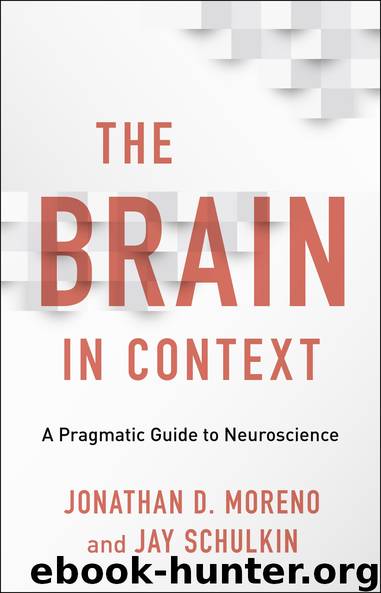The Brain in Context by Jonathan D. Moreno;Jay Schulkin;

Author:Jonathan D. Moreno;Jay Schulkin; [Неизв.]
Language: eng
Format: epub
Publisher: Lightning Source Inc. (Tier 3)
TRANSLATING
Invention is one thing, innovation is another. Fifty years ago it was easy to envision flying cars scattered across the skies, because the technology was already on the shelf, but getting them into the production and transportation systems efficiently and safely, and monetizing their mass production, are other matters altogether. When physicians and scientists talk about “translational medicine,” it’s that challenge that they’re referring to. It’s not clear that any of the inventive technologies we’ve talked about in this chapter, other than tDCS, is ripe for fairly widespread use, and even direct current stimulation faces unsettled questions about its actual benefits.
From the point of view of conferring real value to its users, there’s a good case to be made that deep brain stimulation should be first on the list for moving from experiments to common use. And there is a precedent for marketing medical devices that involve implanting an electrode array into the head: the cochlear implant, which was approved by the U.S. Food and Drug Administration, in the early 1980s, for patients with a certain kind of hearing loss.
However, DBS raises different concerns from cochlear implants or other implanted devices such as pacemakers or insulin pumps. DBS may change personalities in ways that are not well understood, perhaps even getting into potentially dangerous impulsive behaviors such as hypersexuality. Any device or drug that changes the brain raises sticky philosophical questions about informed consent, and these are clinically relevant. For example, is the recipient the same person who consented to the brain modification in the first place? (Of course, neurodegenerative diseases like dementia can raise similar questions, but we’re talking here about deliberate interventions that could change personality.)
One ethical challenge that is becoming evident along with these applied technologies is the need to “design in” the ethics. For example, there is a risk that people who are dependent on neural implants will begin to wonder where the effects of the implant end and their “true selves” begin, similar to what some have reported with the use of medications like Prozac. These concerns might not only create their own psychological problems but also lead some in need to resist the use of these devices. Neuroengineers and neuroethicists need to work together to better understand patient reactions to these devices as they become part of medical care.
Then there are the practical problems related to going from invention to innovation. Some private companies that do experiments require participants to agree to allow the gadget to be removed at the end of the experiment, so their symptoms return. If researchers do allow a patient to keep a device, it might eventually stop working. If a patient has a device that wears out, or when the nearly inevitable scar tissue forms near the implanted electrodes, new parts will be needed. But it can be hard to find replacement parts, especially if the manufacturer goes out of business. And companies aren’t required to share data from the devices that might be useful for research on making
Download
This site does not store any files on its server. We only index and link to content provided by other sites. Please contact the content providers to delete copyright contents if any and email us, we'll remove relevant links or contents immediately.
When Breath Becomes Air by Paul Kalanithi(7262)
Why We Sleep: Unlocking the Power of Sleep and Dreams by Matthew Walker(5640)
Paper Towns by Green John(4169)
The Immortal Life of Henrietta Lacks by Rebecca Skloot(3826)
The Sports Rules Book by Human Kinetics(3588)
Dynamic Alignment Through Imagery by Eric Franklin(3488)
ACSM's Complete Guide to Fitness & Health by ACSM(3467)
Kaplan MCAT Organic Chemistry Review: Created for MCAT 2015 (Kaplan Test Prep) by Kaplan(3422)
Introduction to Kinesiology by Shirl J. Hoffman(3299)
Livewired by David Eagleman(3121)
The River of Consciousness by Oliver Sacks(2992)
Alchemy and Alchemists by C. J. S. Thompson(2911)
The Death of the Heart by Elizabeth Bowen(2901)
Descartes' Error by Antonio Damasio(2731)
Bad Pharma by Ben Goldacre(2729)
Kaplan MCAT Behavioral Sciences Review: Created for MCAT 2015 (Kaplan Test Prep) by Kaplan(2491)
The Gene: An Intimate History by Siddhartha Mukherjee(2491)
The Fate of Rome: Climate, Disease, and the End of an Empire (The Princeton History of the Ancient World) by Kyle Harper(2436)
The Emperor of All Maladies: A Biography of Cancer by Siddhartha Mukherjee(2430)
